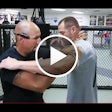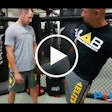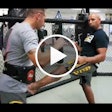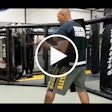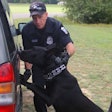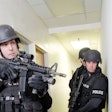"Train the way you want to fight, and you will fight the way you train."
For years, trainers have used this saying as part of the mental preparation and conditioning training for law enforcement professionals, military personnel and martial artists. The problem is that the statement is incomplete, and as a result inaccurate.
Just think about your academy class. When you graduated did you all perform the same way in the field? The answer is no. In the heat of battle, some performed at the highest levels; some failed to perform at all; and the rest performed at various levels in between. Why? You all went through the same training? What's missing?
The missing component is that if you truly want to fight the way you train, then you need to train with imagination and emotion. Training with imagination and emotion means YOU need to make training real for you every time you train.
At the range, you need to put a face on everything you shoot. You need to imagine the target is a real person who's trying to kill you-someone trying to keep you from going home at the end of the shift. That someone is trying to take you away from your family and friends; they're not just a piece of paper. Once you get in the habit of putting a face on everything you shoot, you then need to keep changing the image in your mind of the type of person that target represents. If you only imagine a male ages 18 to 25-who is the prototypical gang member-then you may be setting yourself up to hesitate at the critical moment when the threat comes from a 13-year-old kid, an 80-year-old man, or a pregnant woman.
In the combatives room, you need to imagine the person attacking you is someone intent on breaking your jaw with that roundhouse punch, or trying to cut your head off with that edged weapon. Too often, officers only see another cop when they look at their training partners. Many officers go through the motions in training and just do the minimum number of repetitions necessary to keep the trainer off their back and get through the day.
Going through the motions does not prepare you for a violent encounter. Going through the motions may mean a less desirable outcome for you or your fellow officers.
When you are performing the role of the subject in training, take a moment, close your eyes and imagine how someone who would attack an officer would think, look and act. When you attack your partner, give those facial expressions; display the body language; and use the verbiage of someone attacking an officer with the intent of hurting or killing them. Doing this helps you and your partner be better prepared for what you will encounter in the field.
Training with imagination and emotion is an element of training that is completely within your control. Regardless of the training environment or the number of times you have performed that drill, you can truly prepare yourself to perform at a higher level in the field by training with imagination and emotion.
Editor's Note: Brian Willis is the deputy executive director of the International Law Enforcement Educators and Trainers Association (ILEETA). Contact him via his website Winning Mind Training.








